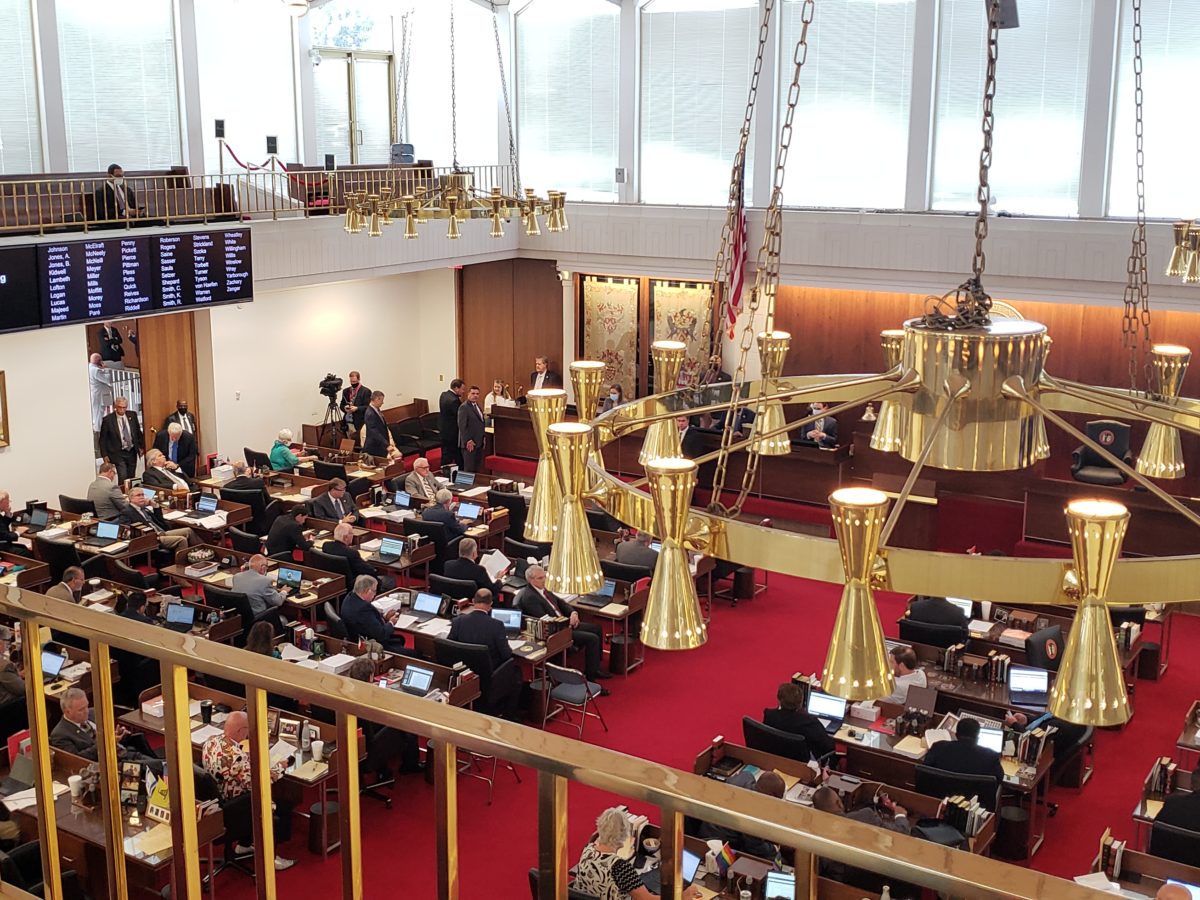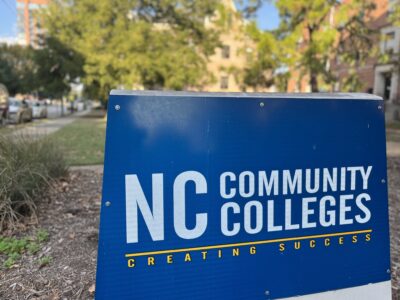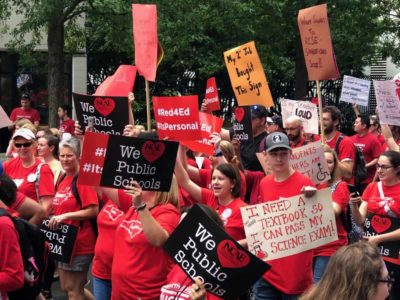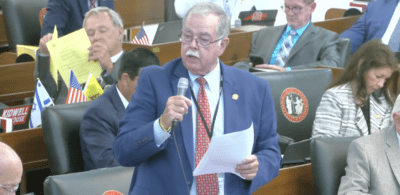
Share this story
|
|
After being left without a new budget for this fiscal year, different state agencies highlighted the need for evidence-based decision-making and flexibility at a panel this week hosted by the N.C. Office of Strategic Partnerships.
Panelists at the “Monthly Connect” discussed where state spending and the budget currently stand, and how their different departments adapt to the changes and lack thereof.
“Evidence and data is very important to our department, to state government as a whole, because it tells you what programs are working. It tells you what programs are not working, tells you where you need to probably shift your financial abilities and thoughts and outcomes over based off those programs that may not be working, that we need to readjust,” Sharon Marsalis, budget director for the Department of Public Safety, said. “So (being) evidence-based gives us an ideal roadmap of how we need to build our budget, and how we need to move forward in the future.”
How does North Carolina create its state budget?
North Carolina operates in two-year legislative sessions. During odd-numbered years, North Carolina’s General Assembly gathers during what is known as the long session. During this time, they create a budget that applies to the next two fiscal years. The fiscal year runs from July 1 to the following June 30. Adjustments are often made during the second year to what has been agreed on.
A lot of decisions that go into forming a budget are informed by the General Assembly’s Fiscal Research Division. In the fiscal research division, they serve as support staff to legislators. If a legislator asked questions related to funding, how programs are administered, or how the revenues are raised, the fiscal research division provides the information on an as-needed basis. The memos, e-mails, and analyses produced in their work are bound by legislative confidentiality — meaning it is up to the legislator if they want to share them with others or not. They also do educational background briefings.
Brian Matteson, director of the research division, said that the priorities legislators have and the information that is available do not always align.
“Ultimately, where legislators want to go in terms of what their funding priorities are may not necessarily always align with the best available research,” Madison said. “And then oftentimes, too, there will be priorities where there isn’t much of a research base, or there isn’t really a gold standard, double-blind study that confirms for us the best way to go.”
What is the status of the state budget now?
The General Assembly passed a budget in late September of 2023. Kristin Walker, state budget director of the Office of State Budget and Management, said there is a long history of passing adjustments in the second year of a budget. However, this year, that hasn’t happened yet.
“We are operating off of a real budget, not a continuing resolution, but we don’t have those adjustments, and some of those adjustments are critically important to a few agencies,” Walker said.
Walker said there are enrollment increases, funding for the Medicaid rebates, and some other areas where not having a new budget from the General Assembly is creating some hardship for state agencies.
When the state legislature passed their adjournment resolution, they said they would come back and address the budget in November, but panelists said they are not sure if that will happen. Both the House and Senate presented bills with budget adjustments during the short session, but they were not able to reach an agreement.
“Even if the General Assembly and/or the governor aren’t interested in reconsidering the policies that they put in place at the beginning of a fiscal biennium, then usually there are demographic shifts or just changes within the existing program structure that, try as we might, are projections for how many citizens will be participating in the Medicaid program or will have attended a community college class,” Madison said. “Those just are destined not to be 100% accurate.”
How close to spending the state budget are we?
Previously, the OSBM announced that North Carolina ended the fiscal year on target. Revenues amounted to $33.69 billion, just 0.1% less than what was budgeted for, according to a press release that agency put out this week.
Over the past three years, revenues were at least 10% over what the state budgeted for, according to the press release. Boosts in business earnings, wages, retail sales, and federal support during the pandemic accounted for this, OSBM said.
“Sales tax collections were $156 million above budget,” the press release said, “but this was offset by individual and corporate income tax collections $155 million below budget.”
Revenue growth was also below average due to income tax reductions and falling inflation on taxable goods. Reductions that the legislature built into the individual income tax rate, a reduction in the corporate income tax rate, and an increase in the transfer of sales tax revenues to the Highway Fund and Highway Trust Fund are predicted to cause the slower-than-average growth in anticipated FY 2024-25 revenues.
“This year’s revenues demonstrate our state is returning to an era where revenue surpluses and growing cash balances are no longer to be expected. We foresee sluggish state revenue growth in the coming years. Of particular concern, the current revenue structure means revenues will no longer keep up with population growth and inflation,” Walker said in the press release.
How does the state budget impact different agencies?
The panelists described a dynamic, cross-sector nature to the budget process. State agencies have to work closely with each other and different branches of government to communicate their needs.
“I often liken us to Grand Central Station. So just about everything comes through this office, and I say that hopefully it comes out in better shape than when it came in,” Walker said.
Everyone at the Office for State Budget Management is considered nonpartisan, Walker said. The same employees stay on even when a new governor is elected, due to the Human Resources Act.
In the community college system, Philip Price said that his agency and representatives from each college have meetings and presentations to put their budgeting needs out there. As vice president and chief financial officer of the North Carolina Community College System, Price said their funding model is dependent on demographics and demands for different programs. He said 58 community colleges can mean 58 different needs.
“We also regularly meet with any General Assembly members who may have an interest and are willing to sit and talk with us for a little bit. We get feedback sometimes on how we may improve our funding processes, and we try and work with different individuals to help see what we can do there,” Price said.
Community colleges do not get to keep their tuition, Price said. When it’s collected, it goes to the state and then it gets reallocated for their programs. All colleges, regardless of size, get a base allotment, and a different formula is used to fund individual programs based on enrollment.
For the Department of Public Safety, Marsalis said that they have to be ready to adjust for changes in demographics. For example, they have to constantly communicate their needs to different agencies such as OSBM when they have to spend money after events like Tropical Storm Debby.
“We’re in the time period of disasters, you know, hurricane season, as we call it, so if a big or small disaster happens, you have to be able to adjust basically all the time,” Marsalis said.
Where can the public go to learn more, or voice their opinions?
The fiscal research division posted their predictions and previous presentations regarding the budget for different departments on the legislature’s website. Along with following OSBM postings, the panelists also encouraged the public to attend meetings and briefings and reach out to their representatives directly.
Correction: The spelling of Brian Matteson’s last name was corrected.








